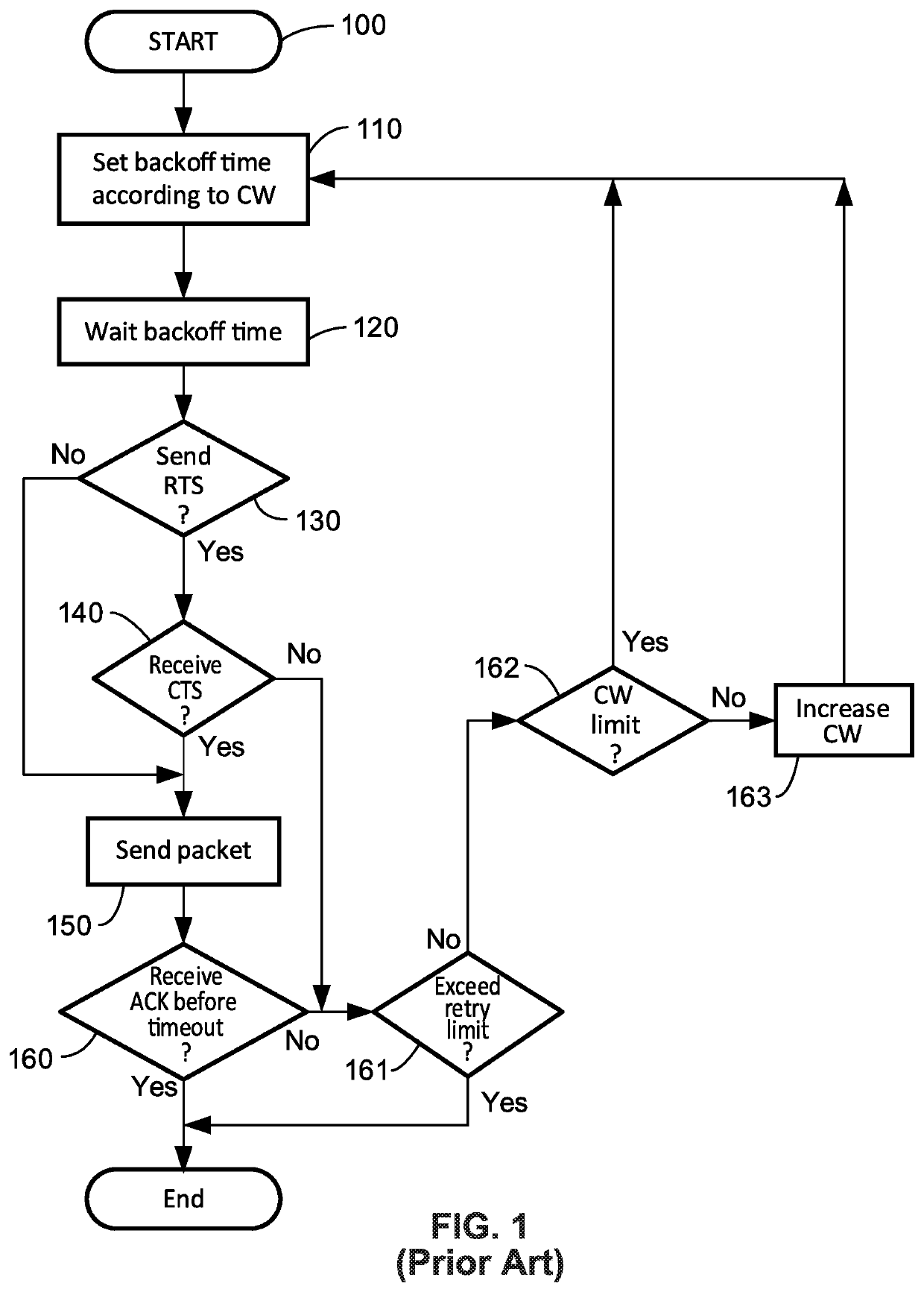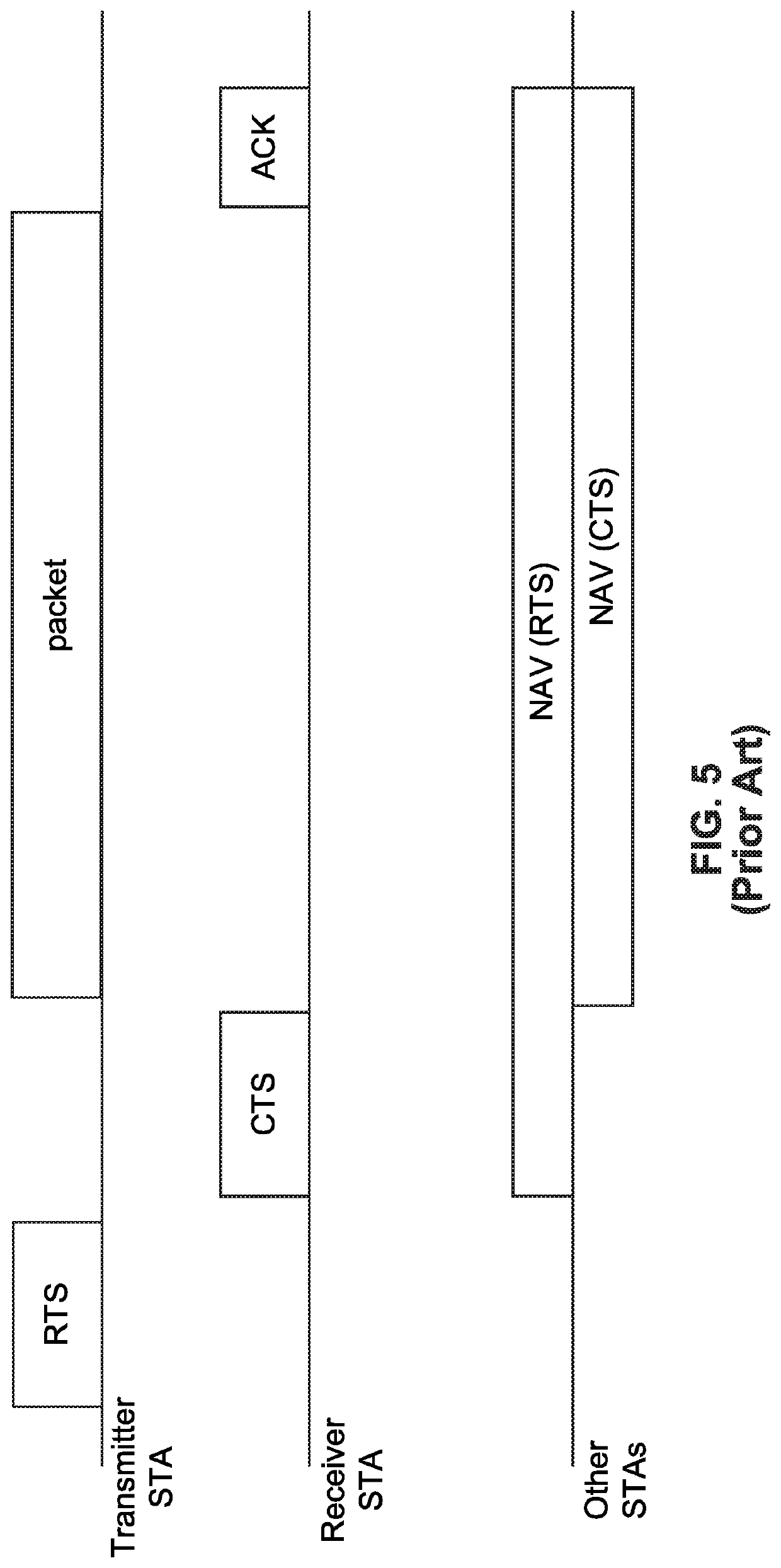RTA contention collision avoidance
a technology of contention collision and avoidance, applied in the field of wireless communication stations, can solve problems such as contention collision, and achieve the effect of preventing channel contention collisions
- Summary
- Abstract
- Description
- Claims
- Application Information
AI Technical Summary
Benefits of technology
Problems solved by technology
Method used
Image
Examples
Embodiment Construction
1. Conventional WLAN Systems
[0061]1.1. Random Channel Access Scheme
[0062]Wireless Local Area Networks (WLANs), such as up to IEEE 802.11ax, have conventionally used a Carrier-Sense Multiple Access / Collision Avoidance (CSMA / CA) mechanism to allow stations (STAs) to have random access to the channel for packet transmission and retransmission.
[0063]FIG. 1 illustrates contention-based channel access in CSMA / CA. In a CSMA / CA system, the STA senses the channel for transmission when there is data to transmit. Before each transmission and retransmission, the STA has to sense the channel and set a backoff time to contend for channel access. The backoff time is decided by a uniform random variable between zero and the size of a contention window (CW).
[0064]After the STA waits for the backoff time and senses that the channel is idle (unoccupied), the STA decides whether to send a Ready To Send (RTS) frame to ensure channel occupancy or not. If the STA sends an RTS frame, the channel occupancy ...
PUM
 Login to View More
Login to View More Abstract
Description
Claims
Application Information
 Login to View More
Login to View More - R&D
- Intellectual Property
- Life Sciences
- Materials
- Tech Scout
- Unparalleled Data Quality
- Higher Quality Content
- 60% Fewer Hallucinations
Browse by: Latest US Patents, China's latest patents, Technical Efficacy Thesaurus, Application Domain, Technology Topic, Popular Technical Reports.
© 2025 PatSnap. All rights reserved.Legal|Privacy policy|Modern Slavery Act Transparency Statement|Sitemap|About US| Contact US: help@patsnap.com



